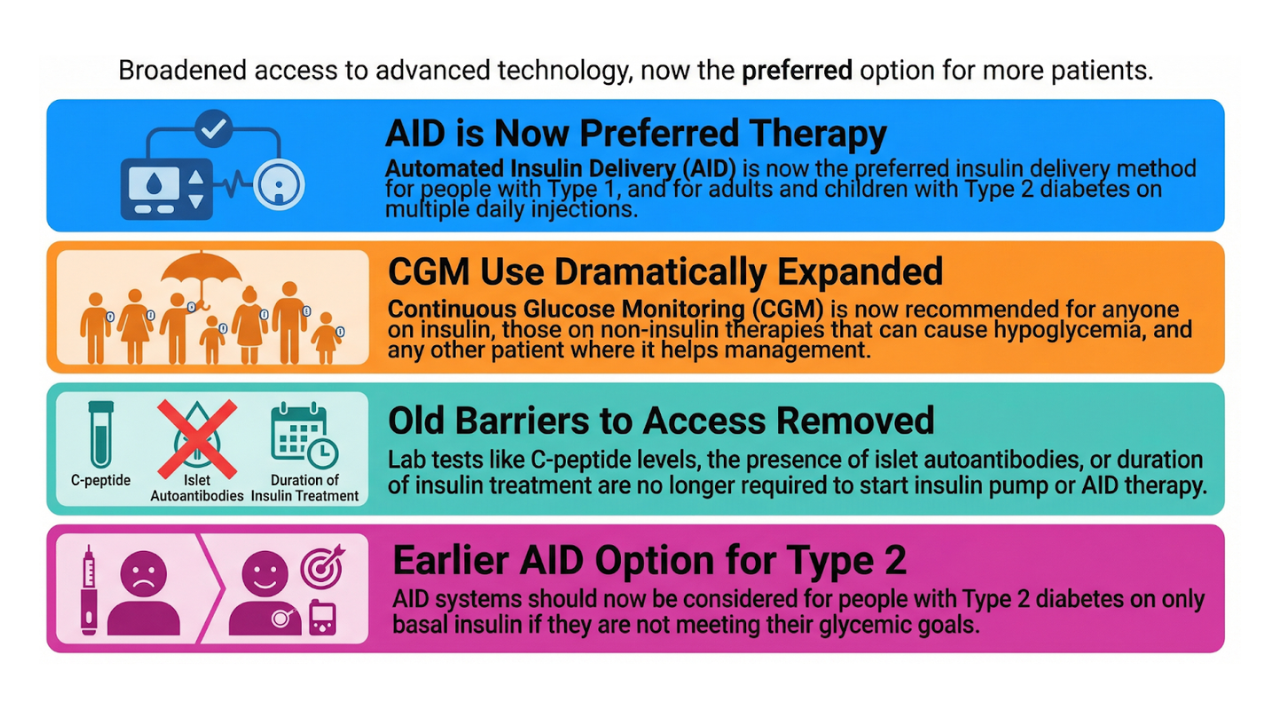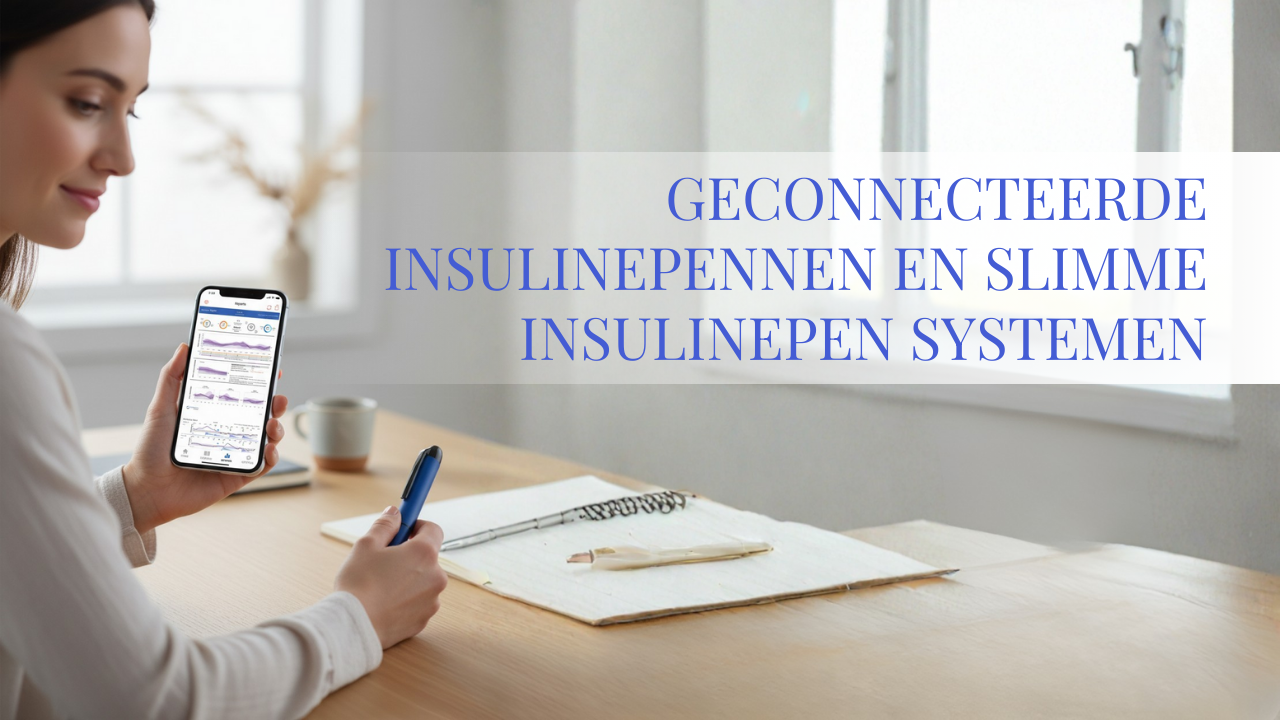Sneak peek: closed-loop systems at the ADA 2022
Jun 21, 2022
The annual conference of the American Diabetes Association (ADA) has just ended, and we've been getting a lot of updates on the latest developments in diabetes. The conference was held in New Orleans and virtually, and over 800 presentations were delivered in 5 days. There were also a lot of interesting sessions on closed-loop systems!
- For example, a session on the Klue technology that turns the MiniMed 780G into a full closed-loop system. The prototype has shown in Israel that good glycemic control could be achieved even without carbohydrate counting or meal announcements.
- There was also a discussion of the real world data of a mega cohort of >20,000 people on Tandem Control IQ. These numbers help to have realistic expectations when starting this system and show what to expect based on your baseline HbA1c, age and type of diabetes.
- And finally, the CREATE Trial: a randomized trial with OpenAPS, a Dana-i insulin pump, and Dexcom G6. This study showed that open-source closed-loop systems are safe and effective in children and adults with type 1 diabetes, demonstrating that these systems may be an option for people with type 1 diabetes.
Each of these updates provide important insights into how closed-loop systems can make life easier for people with diabetes. There is a lot of progress, but there is also a lot of work to be done. I am curious about how diabetes technology will evolve in the coming years!
Get Access To Updated Diabetes Technology Courses
1️⃣ The prototype works: Klue technology turns the MiniMed 780G into a fully closed-loop system

If you use a closed-loop system, manual meal announcements with carbohydrate counting are the best way to avoid a postprandial glycemic peak. This compensates for the relatively slow insulin action of the subcutaneously administered insulin. However, this is not easy: meal boluses are forgotten on average 4x/week, and 63% of adults underestimate their carbohydrates by > 20 grams. In order to reduce the burden on patients, a lot of investigators are trying to find a way to drop the meal announcements and carbohydrate counting, so that a "full" closed-loop system is created (instead of a "hybrid" closed-loop system); and this without having a negative impact on glycemic control.
Clinical data were shown at the ADA using a prototype MiniMed 780G pump with Klue technology, without carbohydrate counting. Klue is an app on an Apple watch that recognizes hand movements while eating, based on motion sensors in the smartwatch. The watch should be worn on the dominant hand and uses data from a gyroscope and accelerometer to detect the possibility of a "meal movement". It can recognize whether the movement is for eating (with a fork or spoon) or for drinking ("bites or sips"). The algorithm translates these meal movements into a number of grams of carbohydrates, and if it is safe (based on sensor glycemia and trend) the bolus calculator will convert these "Klue carbs" into an insulin dose.
Data have shown that there is a strong correlation between the announced carbohydrates of the meal on the one hand, and the total number of meal movements and the duration of the meal (in minutes) on the other. Based on linear regression, each meal movement was converted into an amount of carbohydrates.
The prototype was tested on 17 adults with type 1 diabetes in Israel: 5 days at home with carb counting (without the Klue app) and 5 days in a hotel without carb counting (with the Klue app). Both at home and at the hotel they were asked to eat 5 test meals with a different amount of carbohydrates and calories. The postprandial TIR (time-in-range 4 hours after the meal) was not significantly different in the test meals with a low and normal carbohydrate portion. With the carbohydrate-rich test meals, there clearly was a worse TIR postprandial if the meal was not announced. Overall, however, there was no difference in TIR: the mean TIR at home was 79% and at hotel 76%, which was not statistically significant.
While manual meal announcements will probably always be better than automatic meal detection, it appears that automatic meal detection can provide an acceptable glycemic control. In the next version of the prototype, they will also include drinking movements that detect a rise in glycemia (to differentiate between drinking water and cola/fruit juice), and modify the algorithm to better respond to carbohydrate-rich meals. This version is currently under investigation, and preliminary results are looking good.
So Medtronic is very close to a full closed-loop system, but they are not alone in this race:
- CamAPS HX is a version of CamAPS FX that does not require meal announcements (so it used as a full closed-loop system). Several studies have already been conducted, especially in hospitalized patients with type 2 diabetes (NEJM 2018, Lancet Diabetes & Endocrinology 2019, Kidney International 2019) and also in dialysis patients with type 2 diabetes (Nature Medicine 2021). A study in 30 people with type 1 diabetes will be completed by the end of this year (CLEAR study).
- ATTD 2022 showed results of an update to RocketAP, an algorithm from the University of Virginia (which also developed Control IQ). RocketAP is a model predictive control (MPC) algorithm, and has 2 updates: a meal detection module, and a module that anticipates glucose fluctuations (APEX). In 36 adults with type 1 diabetes, the TIR after 3 days in a hotel with this updated system was 76% and this without meal announcements.
2️⃣ Lessons from real world data of >20 000 people on Control IQ

Is real-world data from Control IQ still needed after Dr Breton's extensive analysis last year? Apparently so. In a cohort of 20,314 people with type 1 (n=19,354) and type 2 (n=960) diabetes, the TIR in the total group rose from 58% on Basal IQ to 71% on Control IQ. This time, due to the large study population, it was possible to assess the effect on TIR in different groups.
When the TIR results were subdivided based on the baseline GMI (=estimated HbA1c), it was found that:
- the TIR of everyone who started Control IQ improved, even if you already had a TIR of >80% at the start;
- the greatest improvement was seen in those with the lowest TIR at baseline;
- people that had a GMI of >7.4% at the start (which usually is the case), did not achieve an average TIR of >70% (=target for diabetes) with Control IQ.
When subdividing the TIR results on the basis of age, there was a clear improvement of around 10-15% TIR in each category.
These results are largely in line with what we see with other closed-loop systems.
Dr. Koratchev emphasized that although the effect of Control IQ was immediately visible after the start, the TIR remained stable during the months after, and that we don't really know why. It's good that the effect lasts, but it's also strange that the TIR doesn't improve systematically as people get more experience with their closed-loop system. We also see this stabilization of the TIR in studies with other closed-loop systems.
- This may have to do with physiology, such as the relatively slow action of the exogenous insulin that is subcutaneously infused.
- Or maybe it's because of a change in the patient's behavior. In this cohort it was shown that people started bolusing significantly less after starting Control IQ (an average of 4-6 times a day). On the one hand, this is of course because the closed-loop system takes over the interim corrections, but on the other hand there appears to be a clear relationship between the number of boluses and the TIR. The fact that people who give a lot of boluses have a higher TIR has already been demonstrated with the MiniMed 780G. The question here is, of course, what the patient's preference is: a better TIR by bolusing more, or suffering less from your diabetes by not having to bolus for every snack. In any case, this study (published last week!) shows that even people who give little or no boluses have very good results with Control IQ.
The conclusion is that although Control IQ can show impressive results in terms of TIR, a closed-loop system alone is not enough to achieve the proposed target value in all patients. Going forward, dr. Koratchev saw an advantage in adding an SGLT2 inhibitor, partly due to the recent publications on empagliflozin 5 mg/d (DT&T 2022) and 25 mg/d (Nature Medicine 2022) in combination with closed-loop systems.
With regard to type 2 diabetes, the Tandem Control IQ system seems to work just as well as in people with type 1 diabetes: the TIR in this real world cohort increased from 65% to 72%. As in the people with type 1 diabetes, the TIR increased independently of the baseline GMI, with the greatest effect seen at the worst baseline GMI.
3️⃣ CREATE Trial: Open-source closed-loop systems are safe and effective in children and adults with type 1 diabetes

Some people use "open-source" or "do-it-yourself" closed-loop systems. According to a recent international consensus and to ADA guidelines, healthcare providers are advised not to prescribe these systems, but to support people using these systems to ensure that they are used safely. The exact number of people using an open-source closed-loop system is unknown. It is estimated to be between 2,500 and 10,000 people worldwide, but it could be many more.
Here are the 3 algorithms used, and which pumps and CGMs they can work with:
There is quite a bit of real-world data on open-source closed-loop systems (see also this publication from May 2022), but the criticism is often that these are mainly used by highly motivated people who already have good glycemic control. They are also often seen as technically very difficult to start up and therefore not suitable for the general public. To verify this, a randomized CREATE trial (Community deRivEd Automated insulin delivery) was set up, and the results were reviewed on the ADA congress.
100 people with type 1 diabetes (7-70 years) on an insulin pump were randomized to an open-source closed-loop system or SAP (sensor-augmented pump) without closed-loop (control group). The open-source closed-loop consisted of the OpenAPS algorithm on a cheap mobile phone (cfr photo), a Dana-i insulin pump and a Dexcom G6 CGM. After 6 months, only 2 patients had stopped using the system, indicating great ease of use. The time in auto mode was also 94%. The TIR increased from 61% to 71% in the closed-loop group and remained stable from 57% to 54% in the control group. As with other closed-loop systems, the effect on the TIR was greatest at night, was measurable immediately after start-up, and the effect remained stable over time. No severe hypoglycemia or ketoacidosis was noted. This study thus proves that open-source closed-loop systems (such as OpenAPS) are safe and effective in children and adults with type 1 diabetes.
In the future, the investigators hoped to be able to evolve into a full closed-loop system by intensifying the parameters of the algorithm. One of the comments from the audience was that problematic hypoglycemia was sometimes seen with these open-source closed-loop systems, due to people setting an unrealistically low glucose target ("e.g. 80 mg/dl"). In this study, patients were "allowed" to lower their target to 90 mg/dl, and no severe hypoglycemia was noted.
In this first blog post on the ADA 2022 conference, we saw how Klue can transform the MiniMed 780G into a full closed-loop system, what you can and cannot expect from Control IQ based on real world data from >20,000 patients, and finally that open-source closed-loop systems are safe and effective for people with type 1 diabetes.
However, these updates are only part of the closed-loop updates of the ADA.
Sign up for my mailing list today and keep an eye on your inbox for my next blog to learn more!
Greetings,











